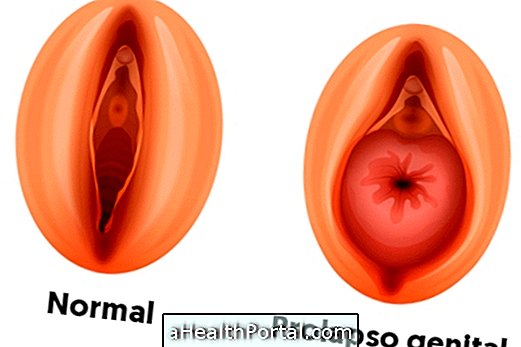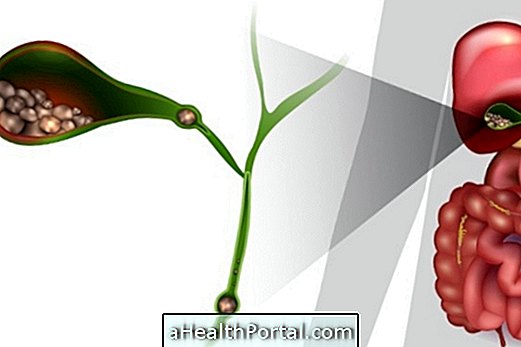Genital prolapse, also known as vaginal prolapse, occurs when the muscles supporting the female organs in the pelvis weaken, causing the uterus, urethra, bladder, and rectum to travel down the vagina and even outward.
Usually the symptoms depend on the organ going down the vagina and the treatment can be performed with exercises that strengthen the muscles of the pelvis and surgery.

What are the symptoms
Symptoms that can occur in people suffering from genital prolapse depend on the organ that descends through the vagina, such as the bladder, urethra, uterus, or rectum. Learn more about rectal prolapse and uterine prolapse.
These symptoms may include a feeling of discomfort in the vagina, presence of a lump at the entrance of the vagina, feeling of heaviness and pressure in the pelvis or as if sitting on a ball, pain in the back, frequent urination, difficulty in emptying the bladder, frequent bladder infections, abnormal vaginal bleeding, urinary incontinence and pain during intimate contact.
Possible causes
Genital prolapse occurs due to weakening of the pelvic muscles, which may be due to several factors.
During childbirth, these muscles may stretch and become weaker, especially if delivery is time-consuming or difficult to perform. In addition, aging and decreased estrogen production during menopause may also contribute to the weakening of the muscles that support the organs in the pelvis.
Although they are rarer, there are other factors that can lead to vaginal prolapse, such as persistent cough due to chronic illness, overweight, chronic constipation, heavy lifting frequently.
How to prevent
A good way to prevent genital prolapse is to frequently practice Kegel exercises, which serve to strengthen the pelvic floor muscles. Learn how to do these exercises and learn about other health benefits.
How is the treatment done?
Practicing Kegel exercises and losing excess weight may help prevent genital prolapse from occurring or worsening.
However, in some cases it may be necessary to perform surgery to place the pelvic organs back into place and strengthen the muscles. This surgery can be done through the vagina or through laparoscopy. Learn more about laparoscopic surgery.





















